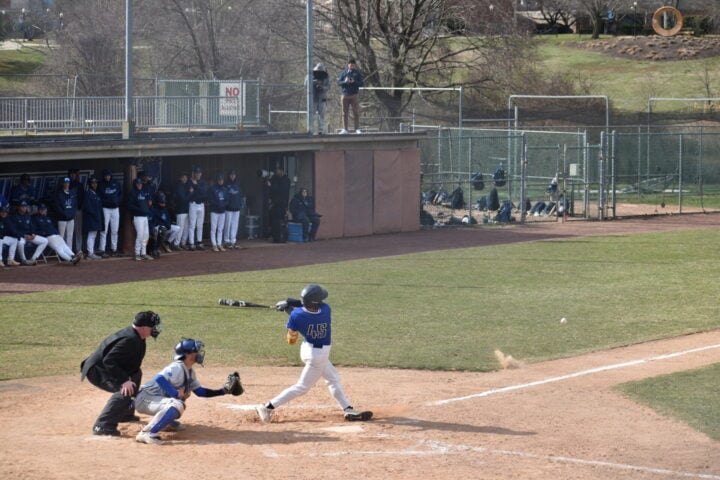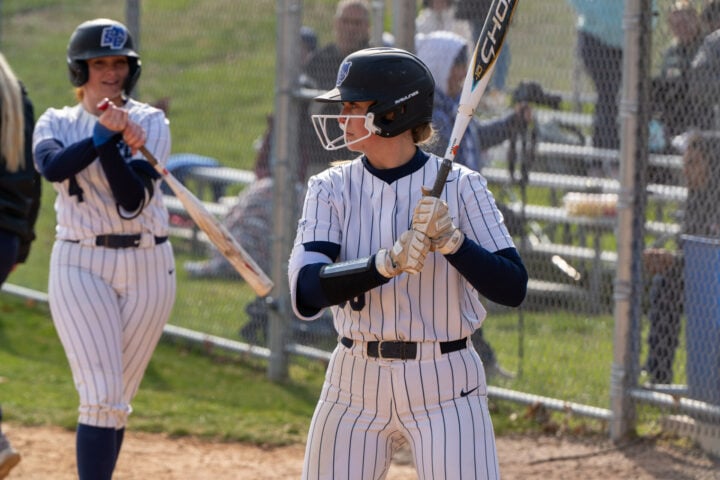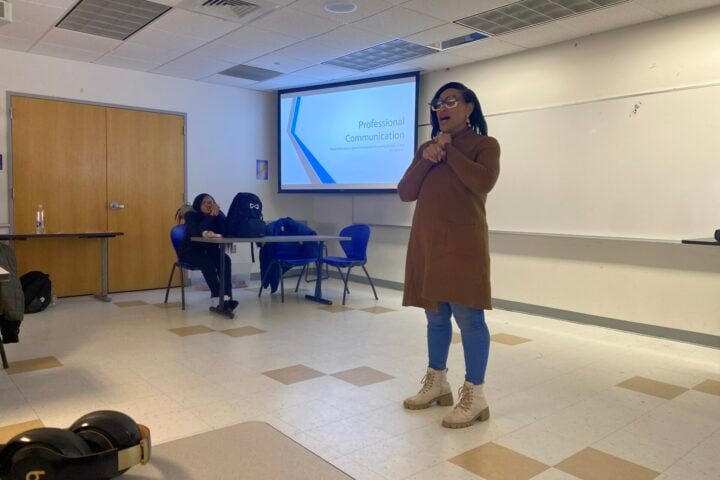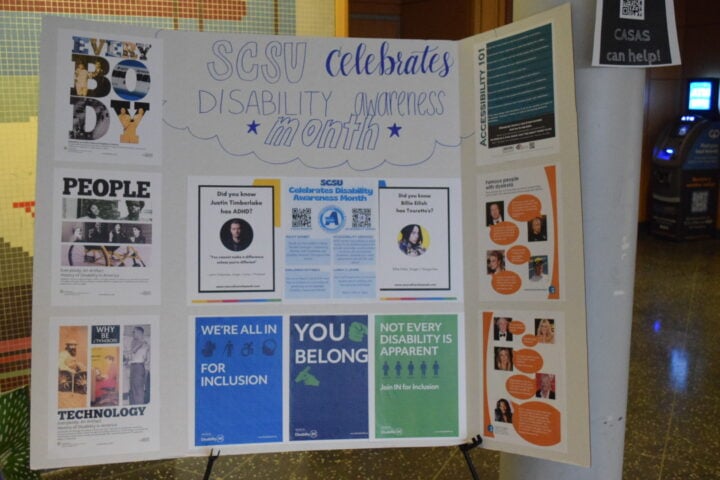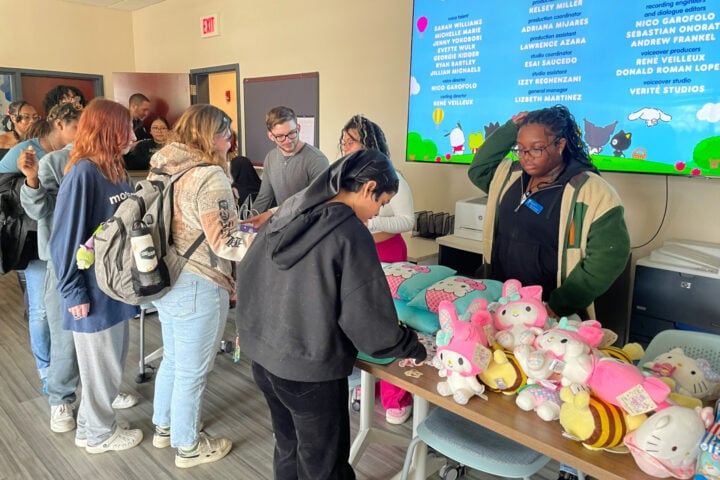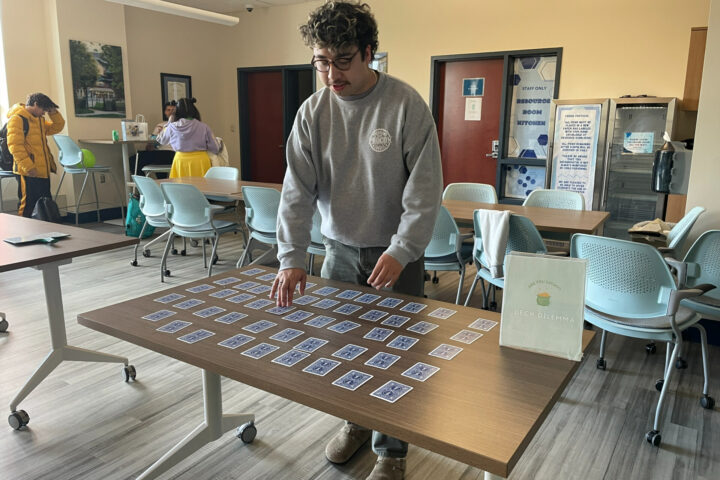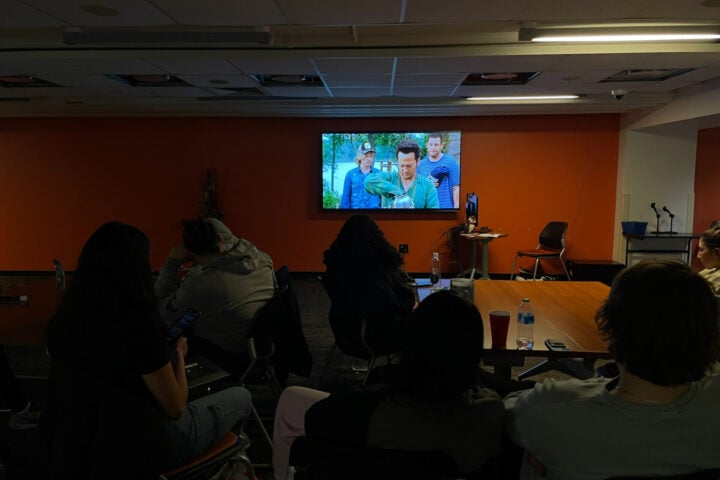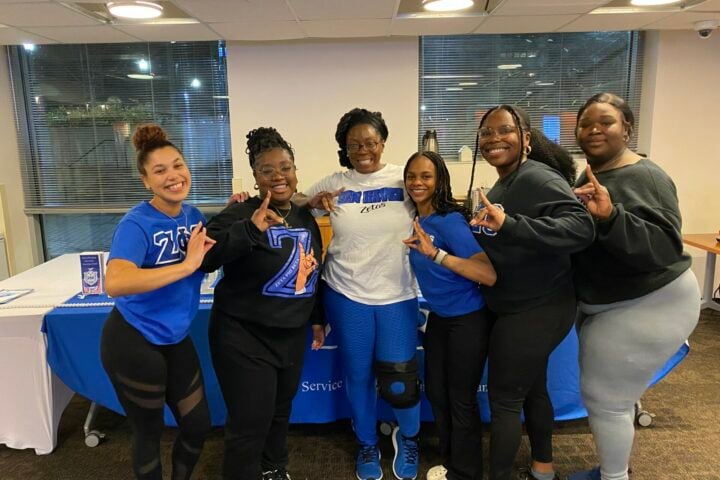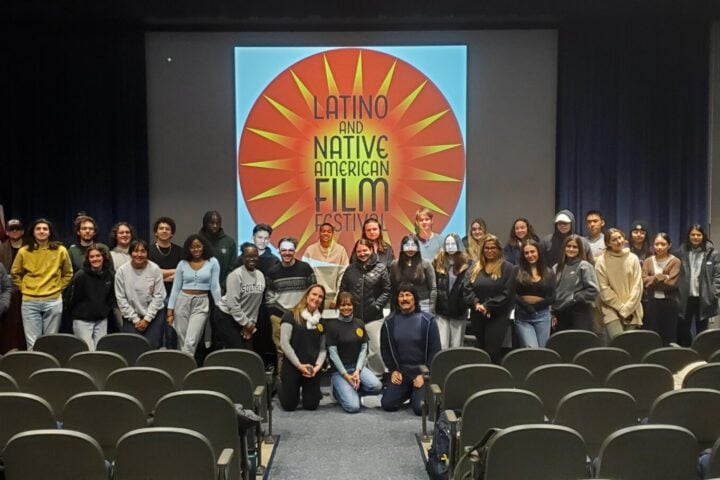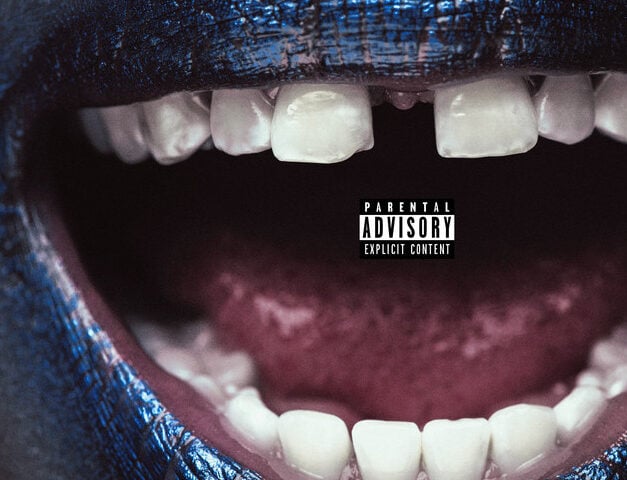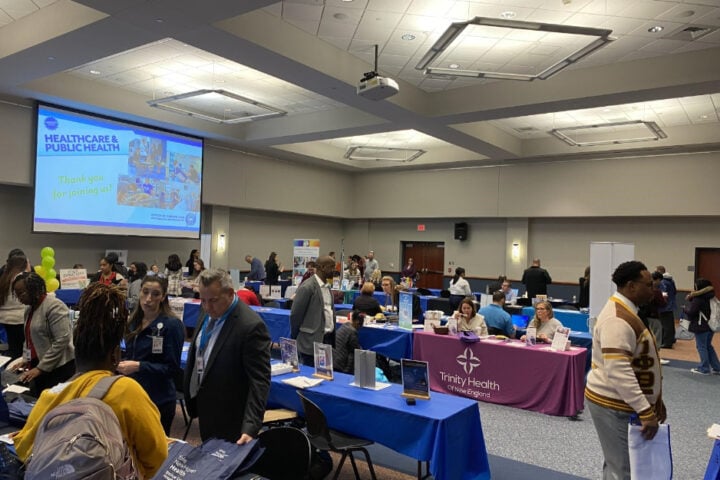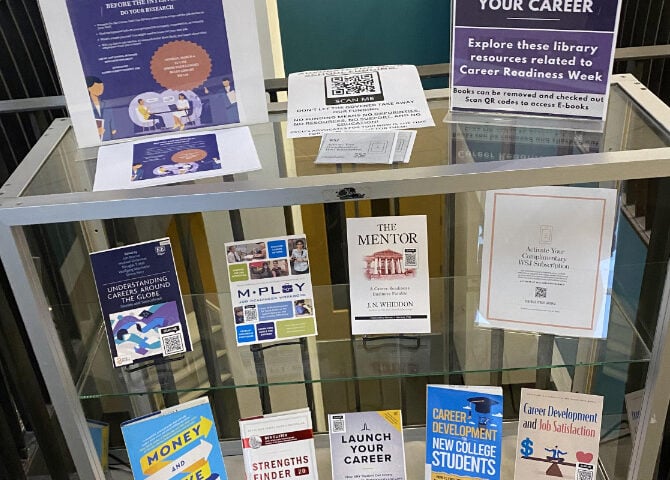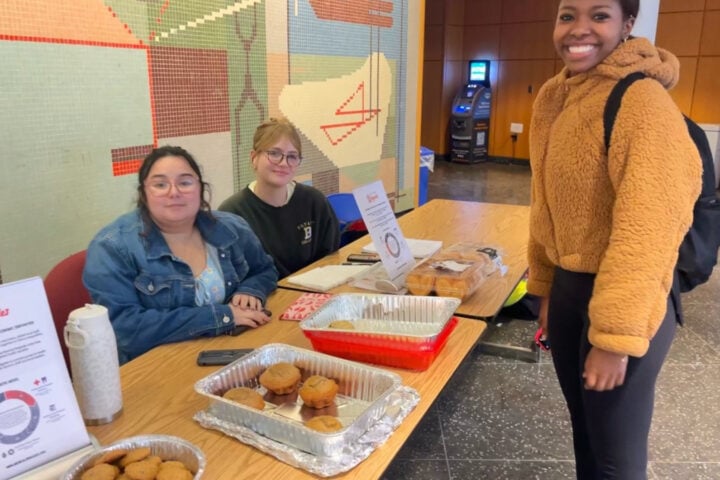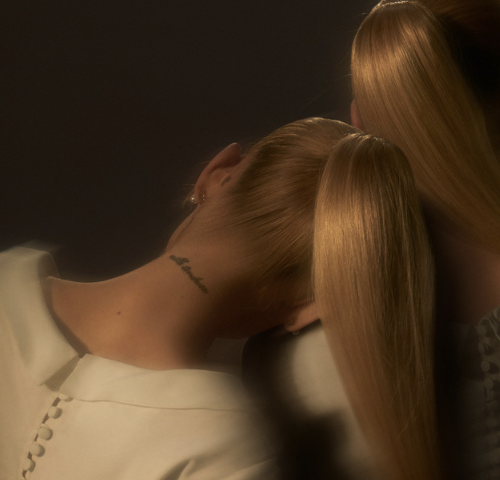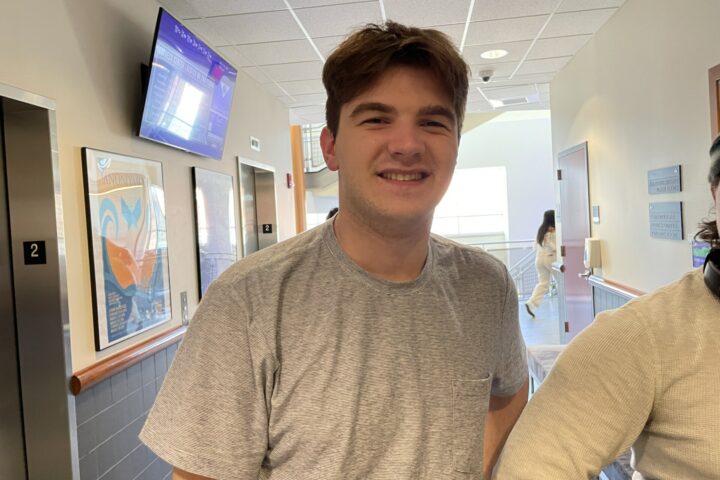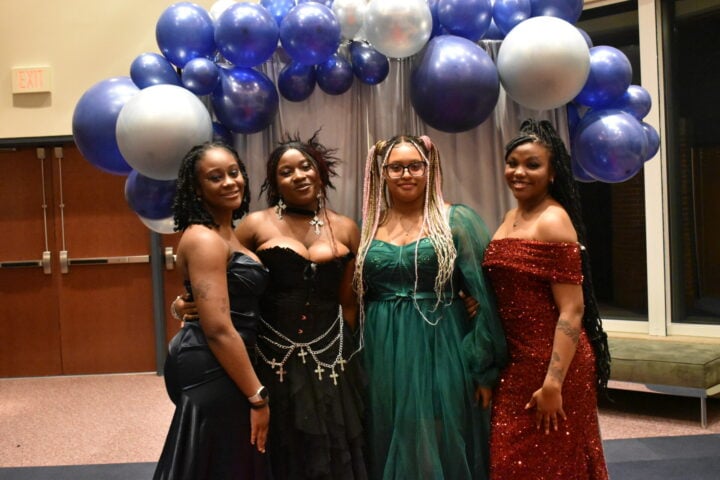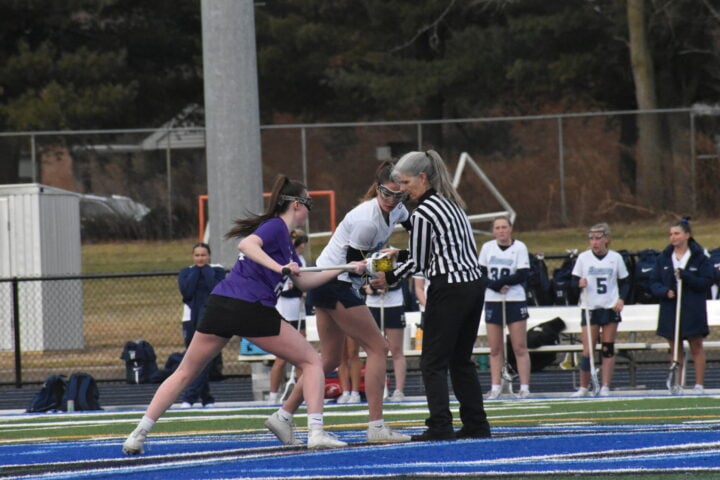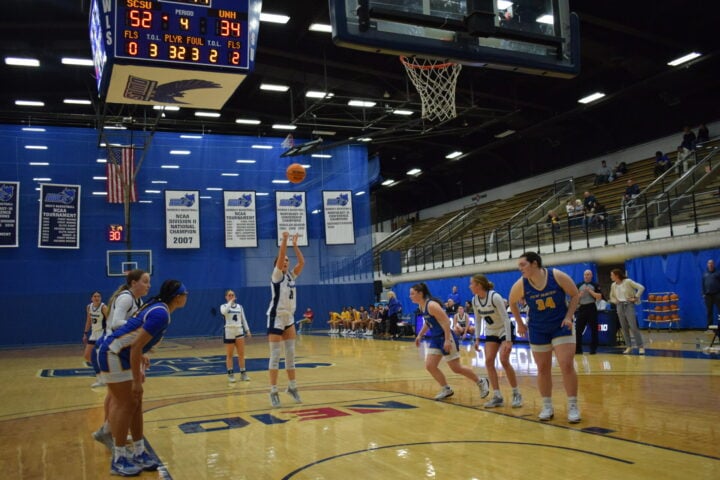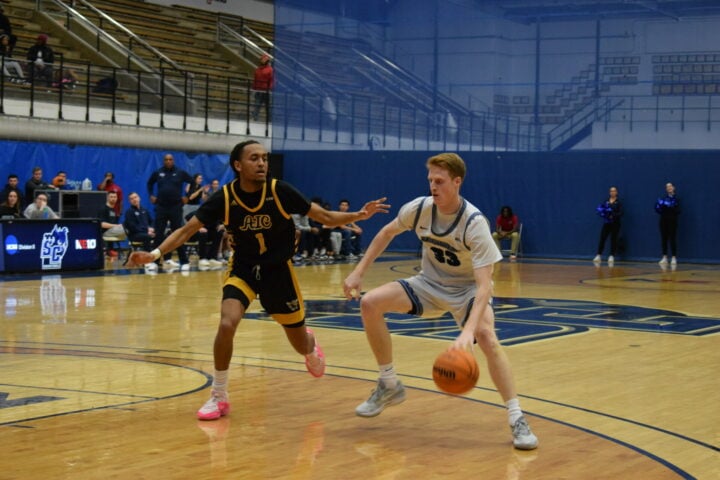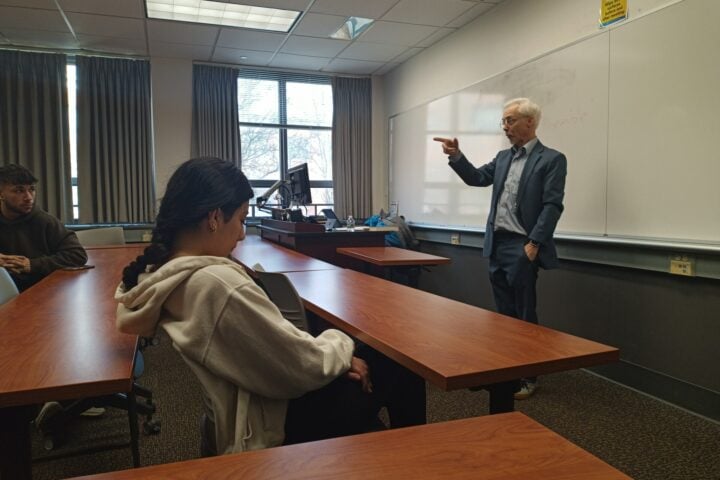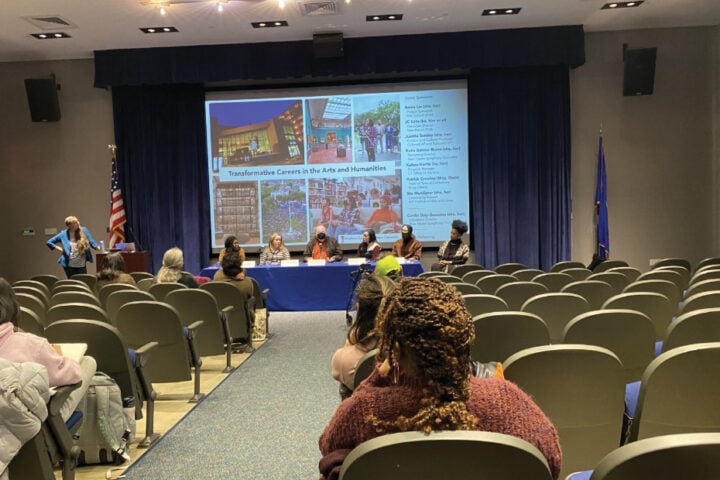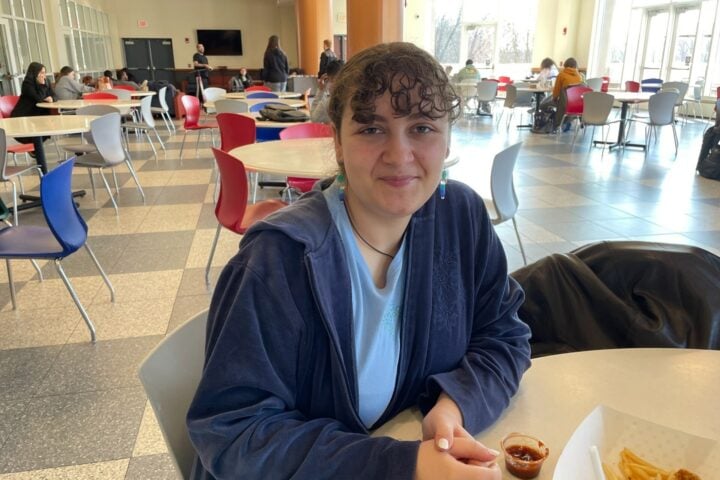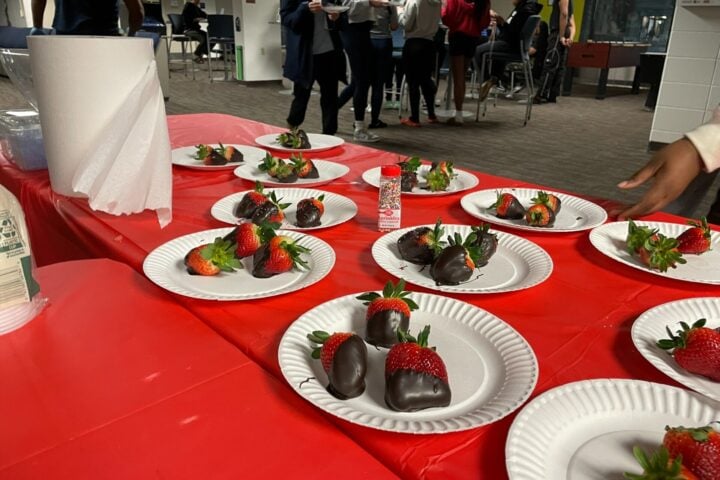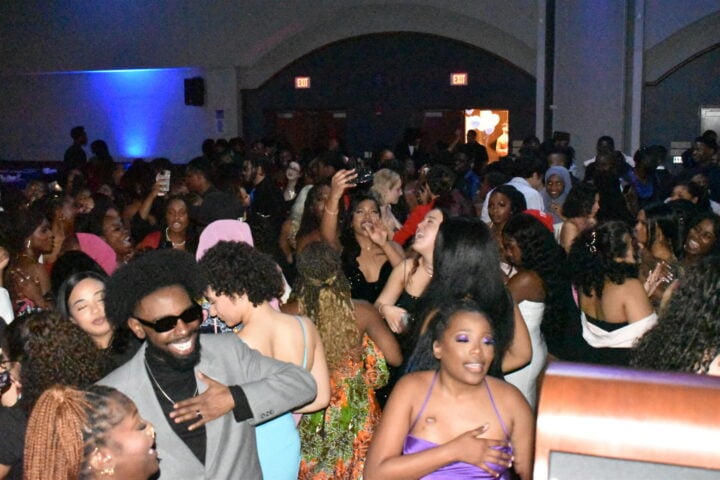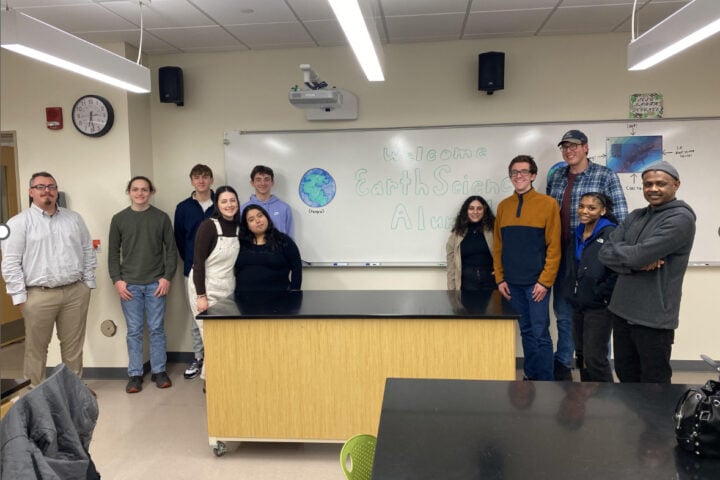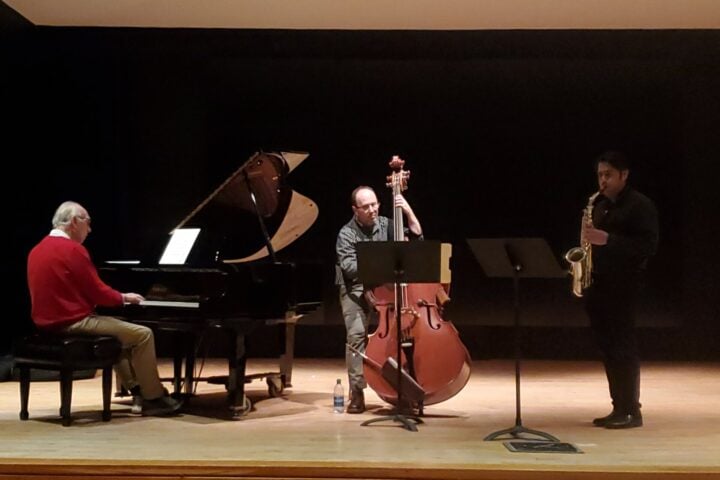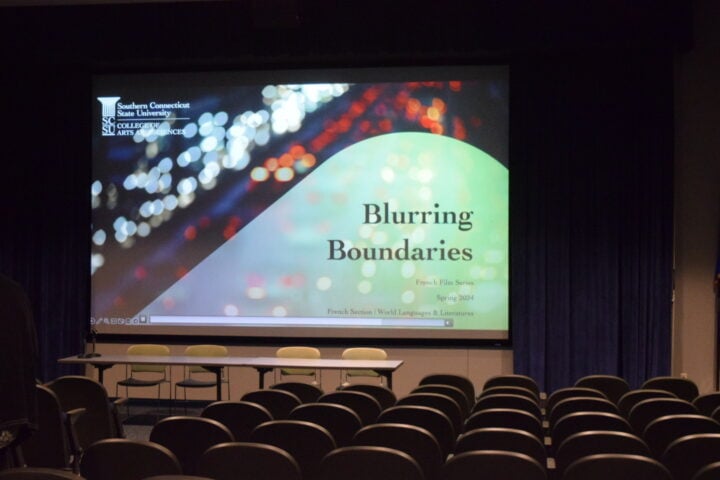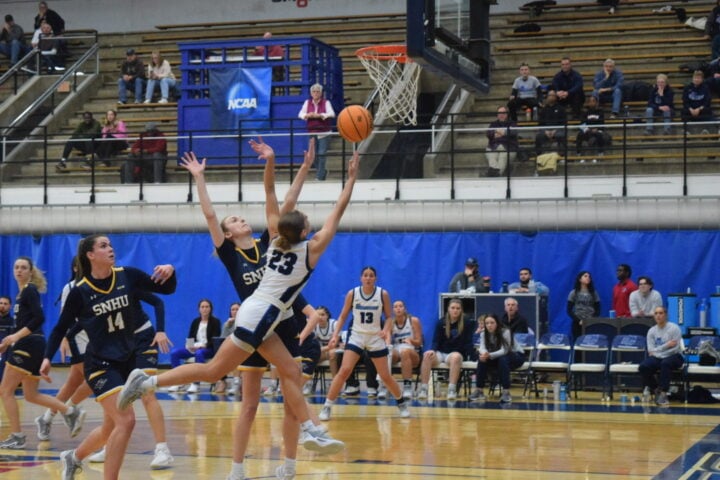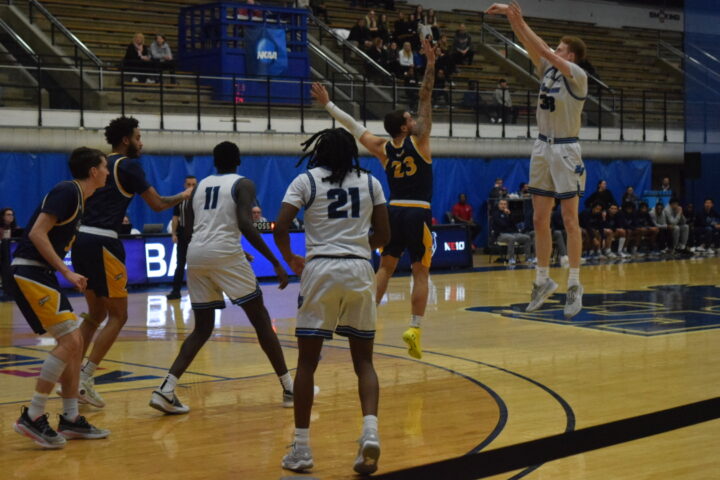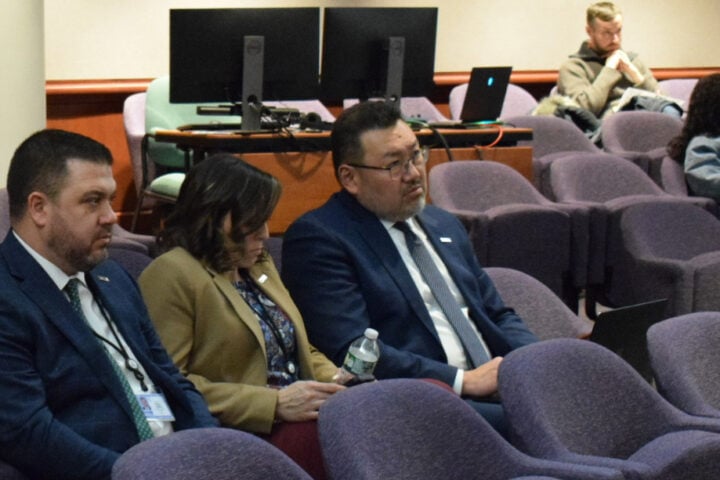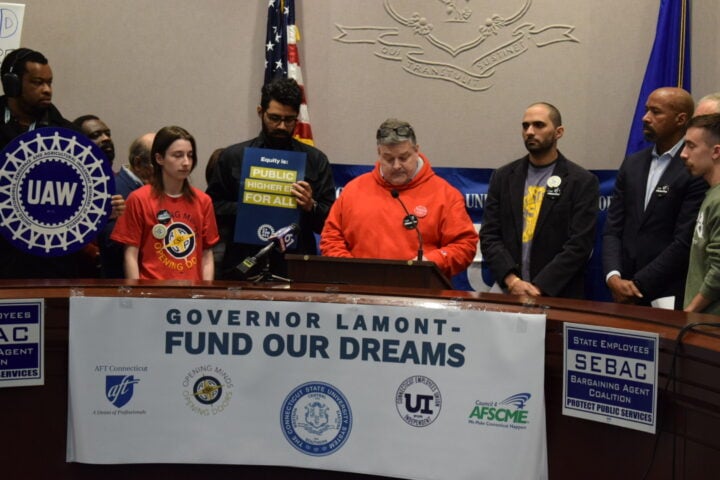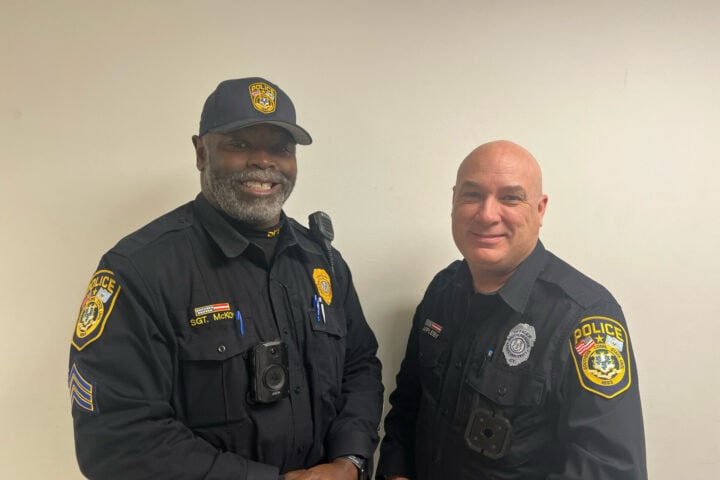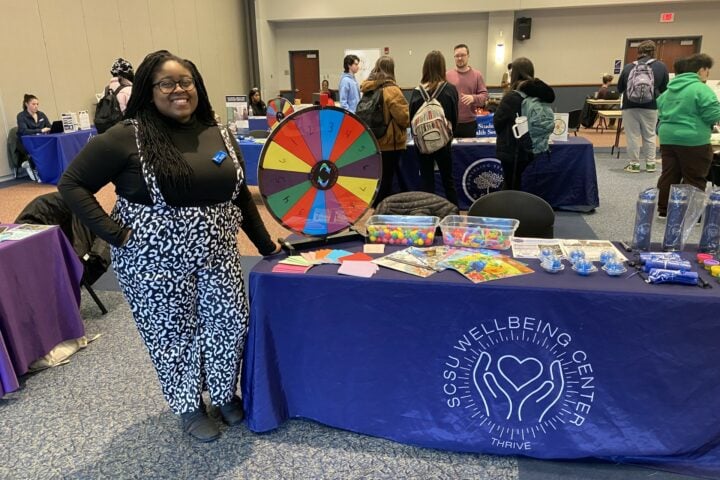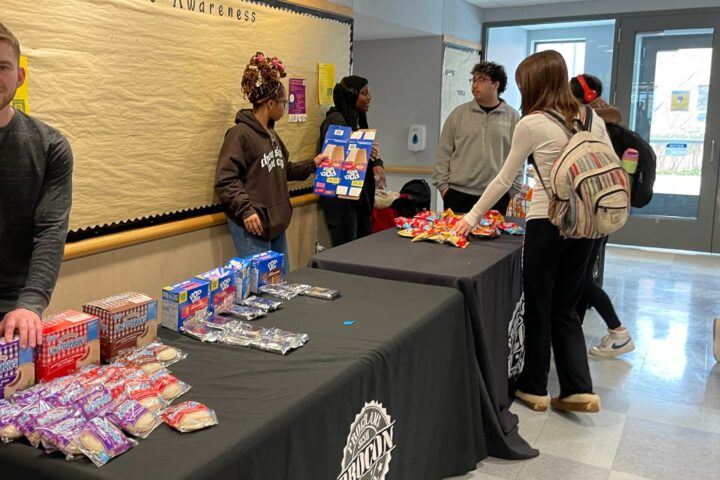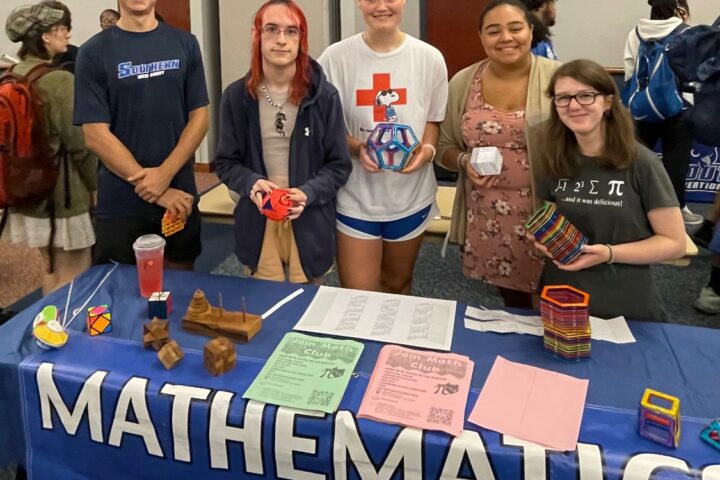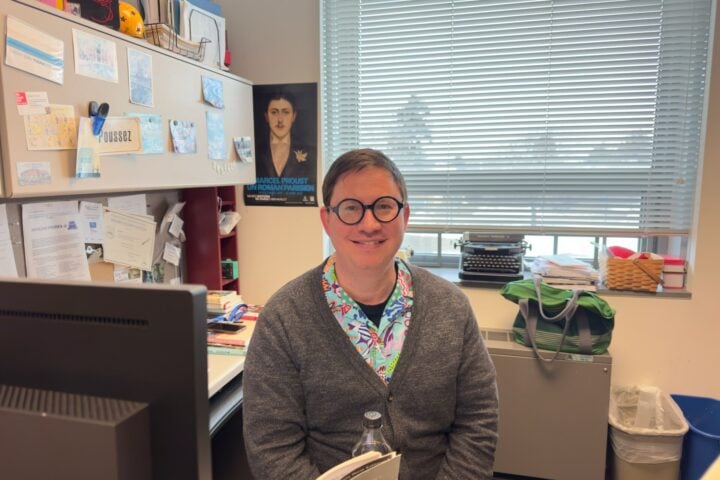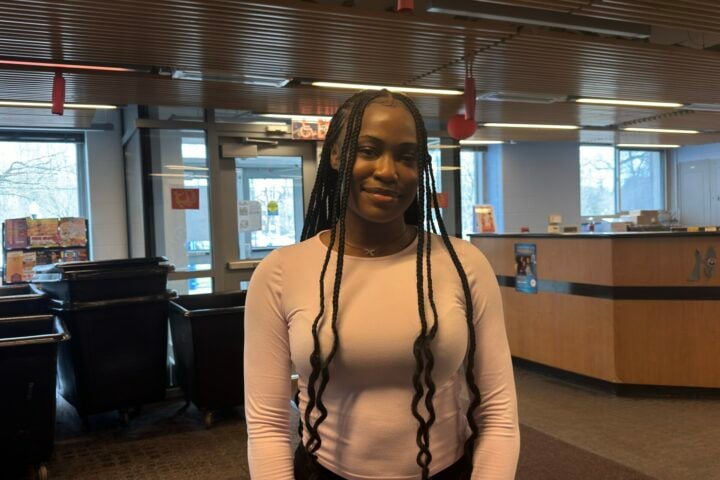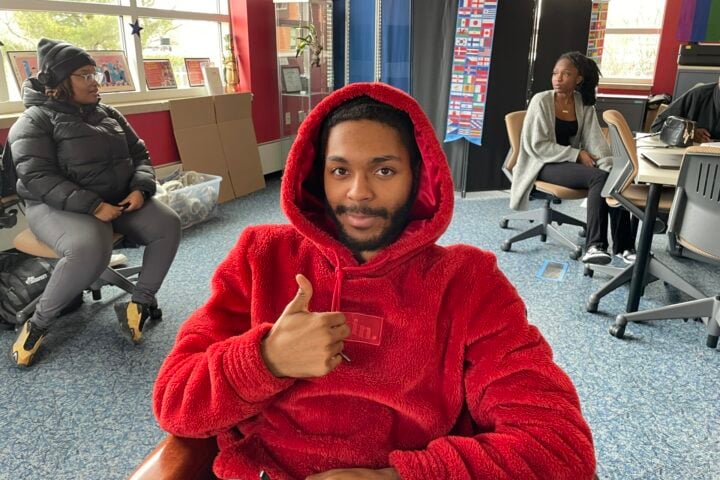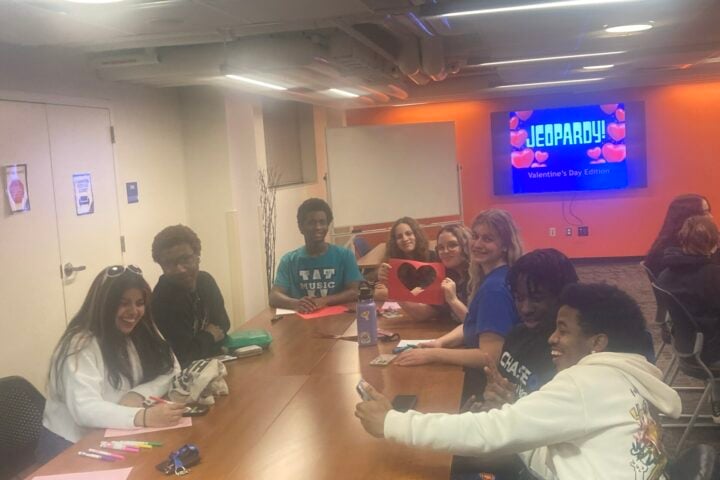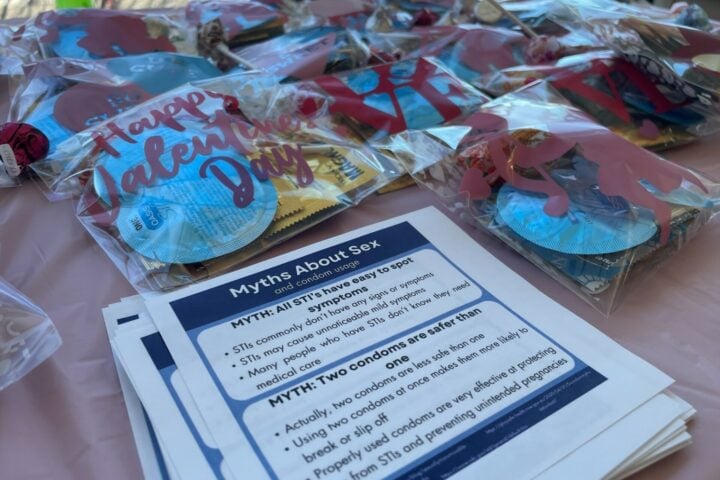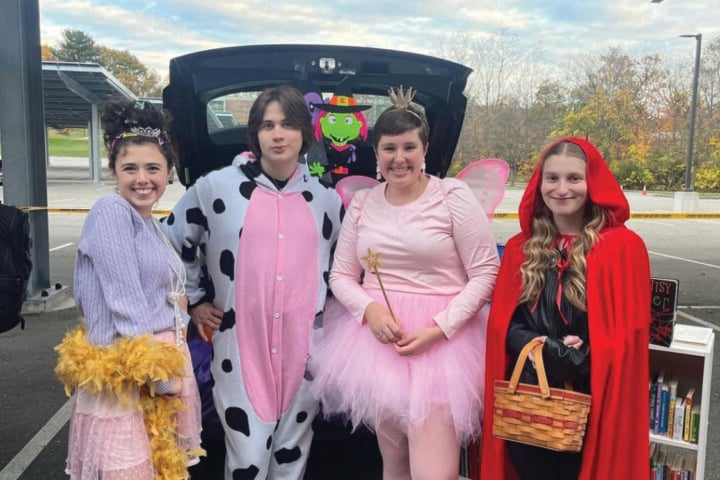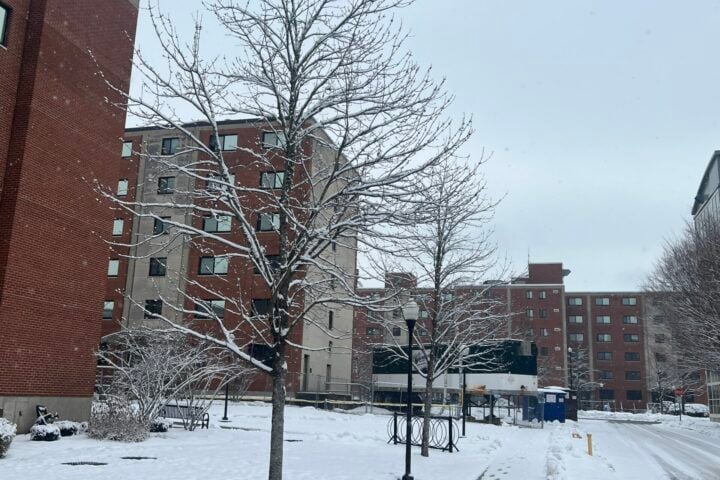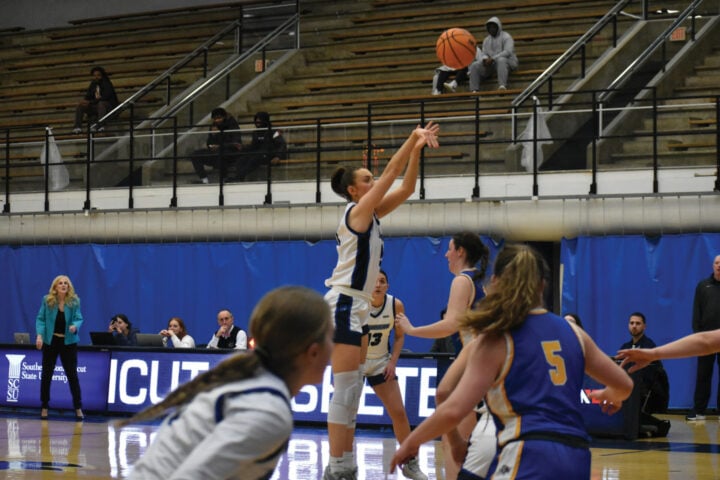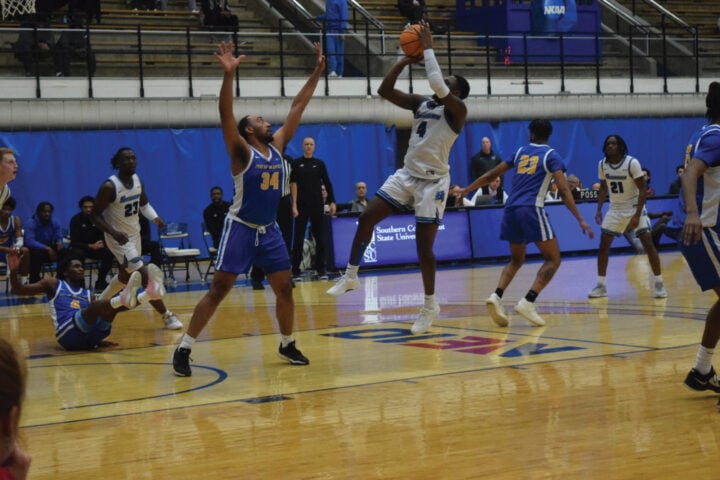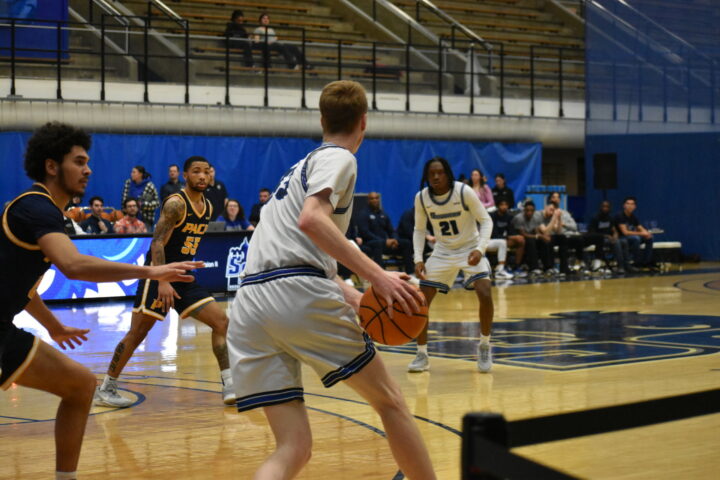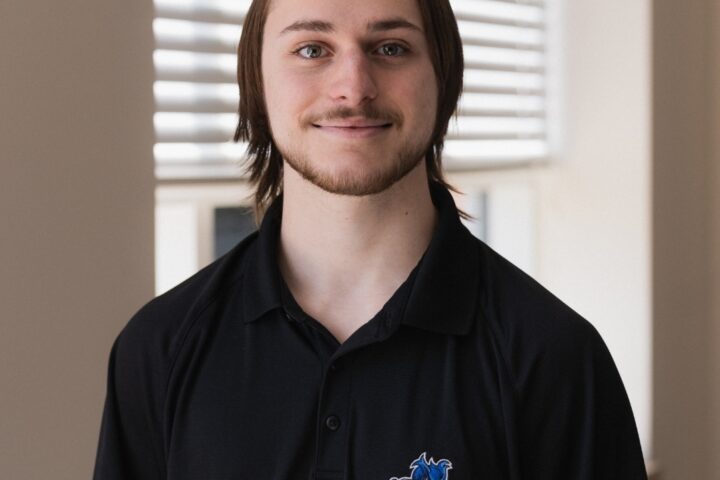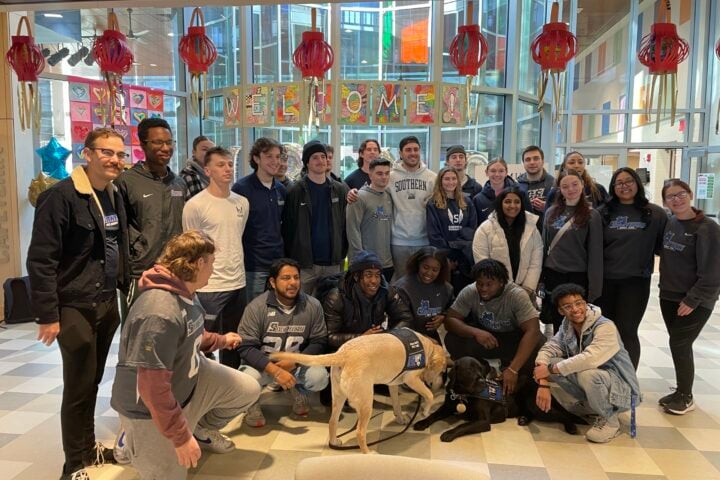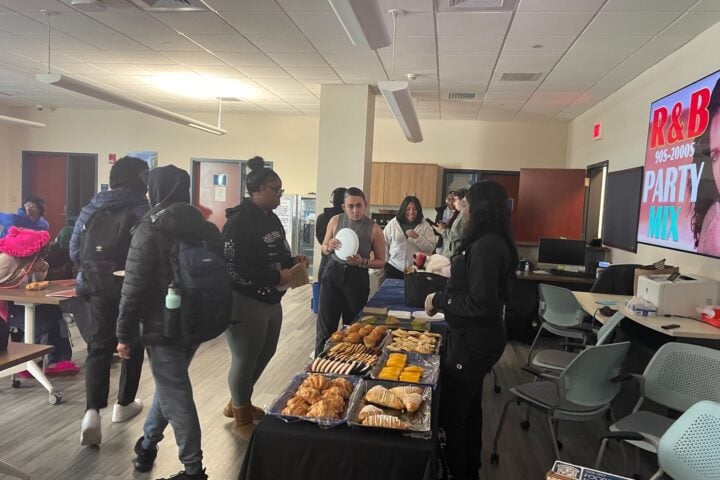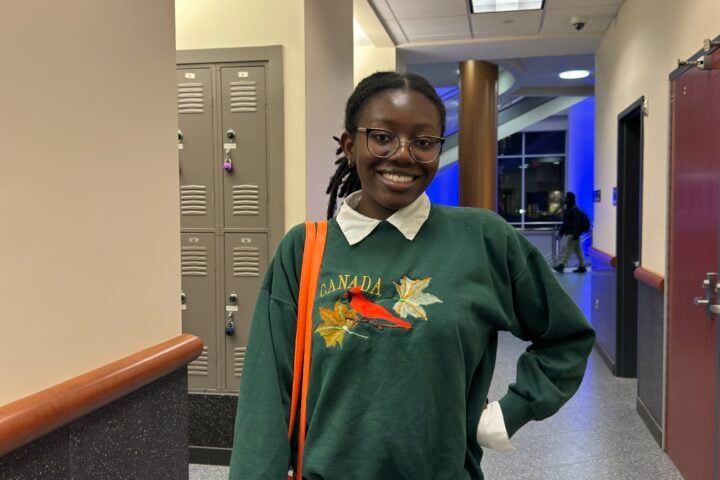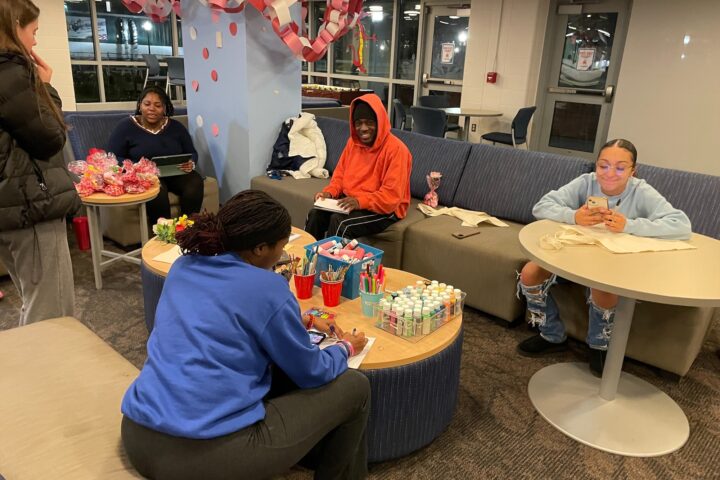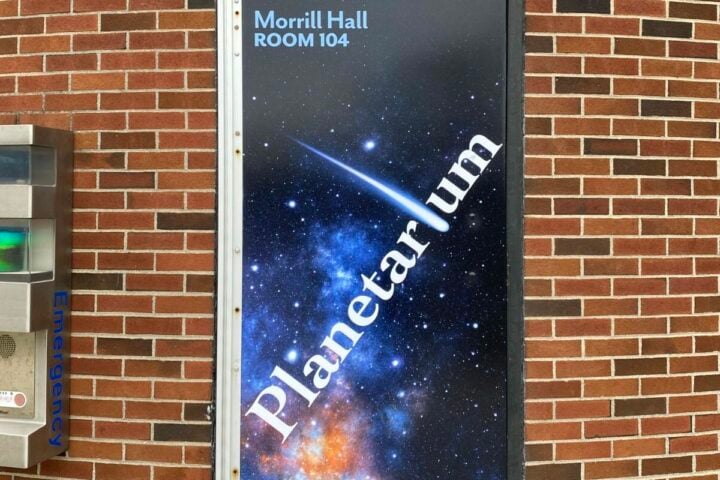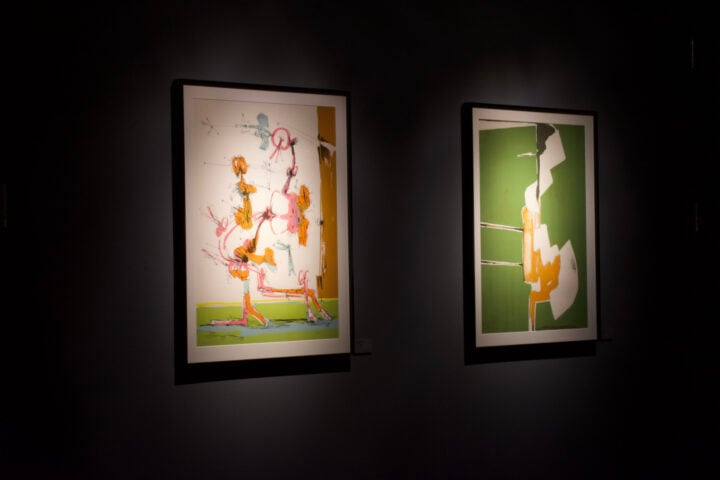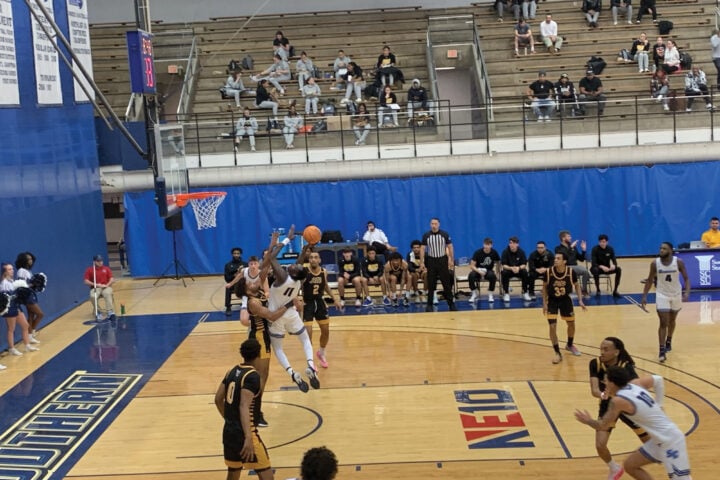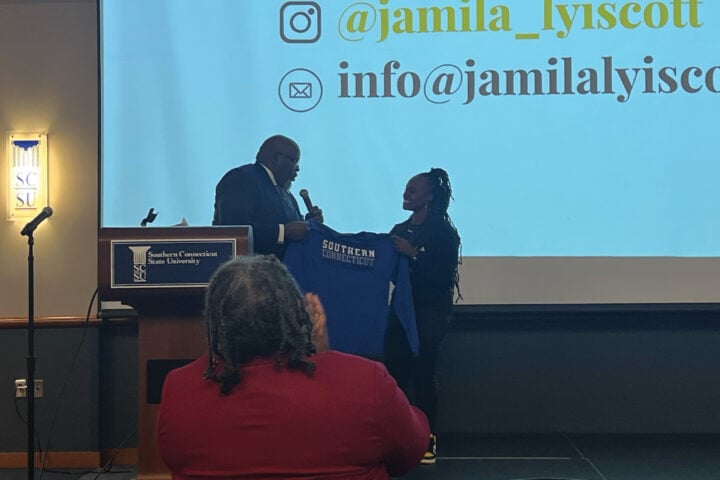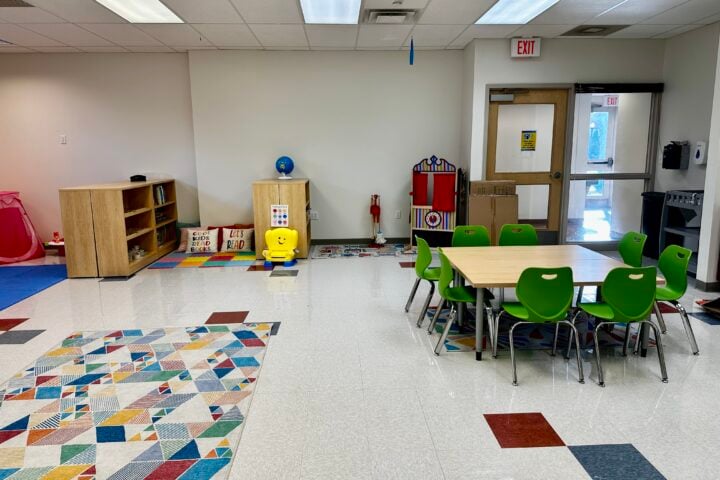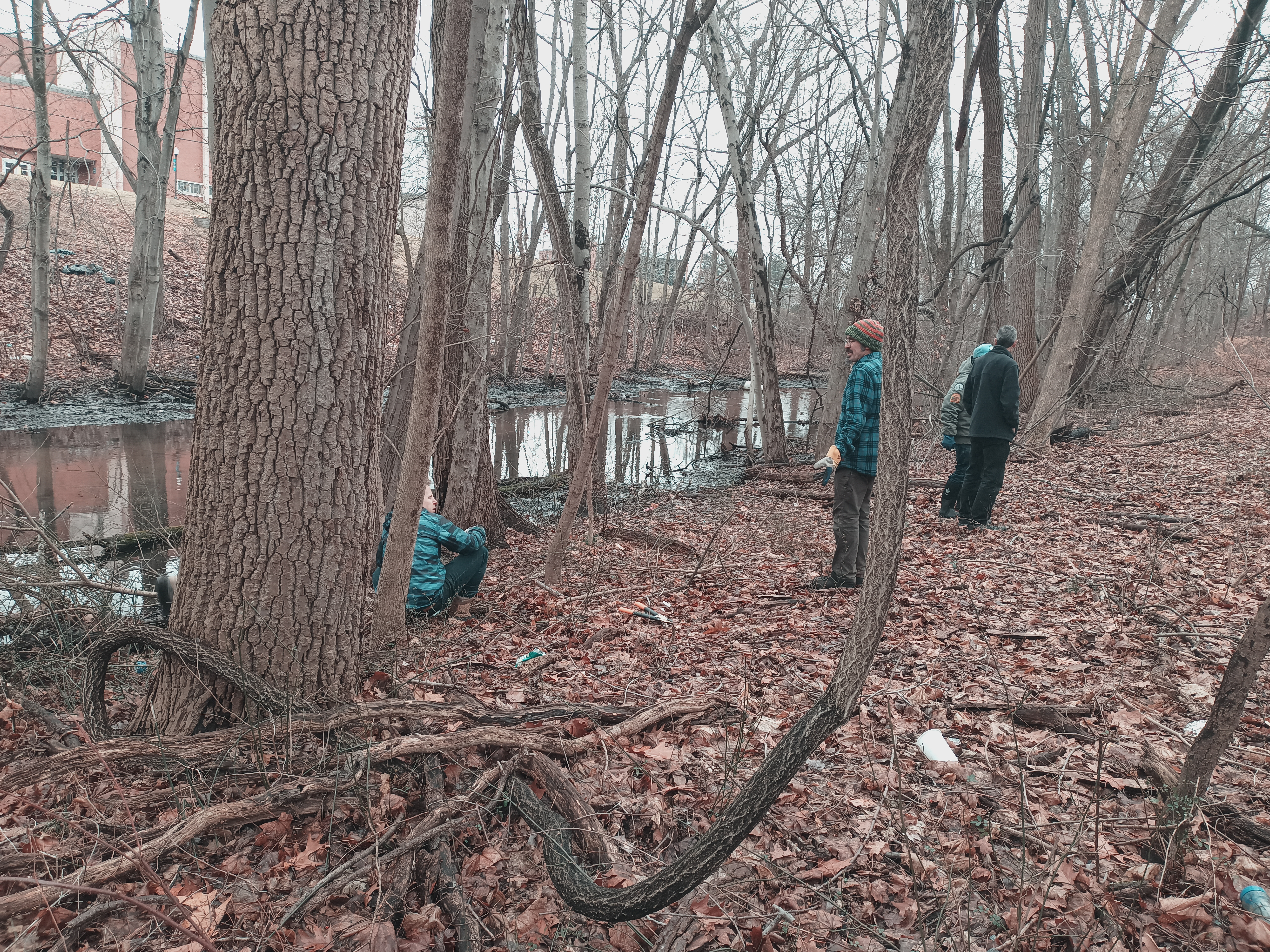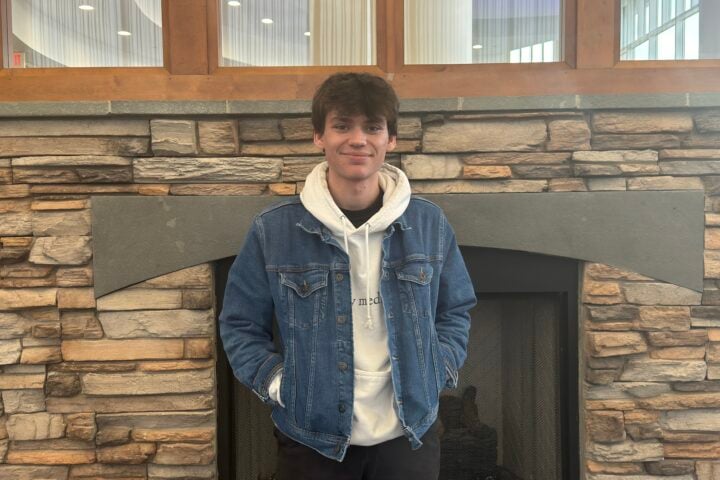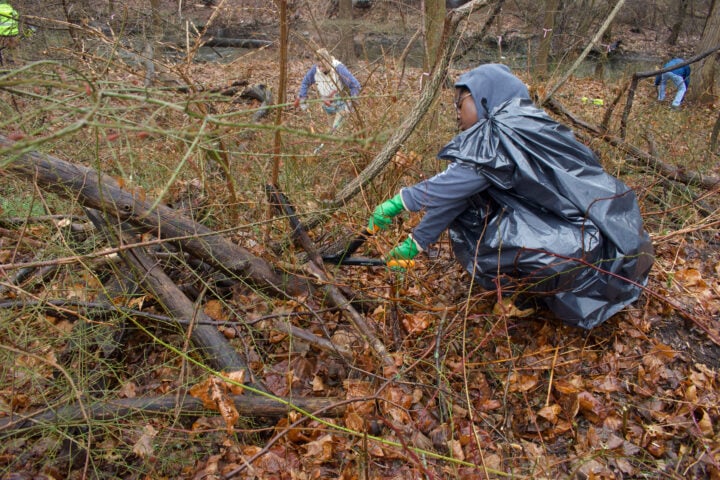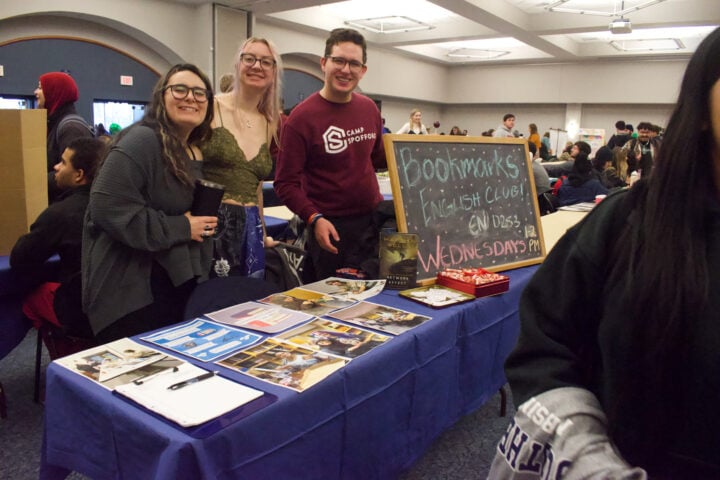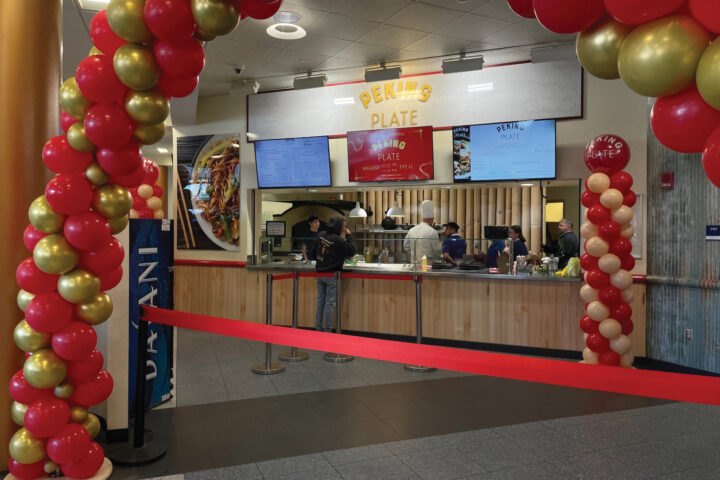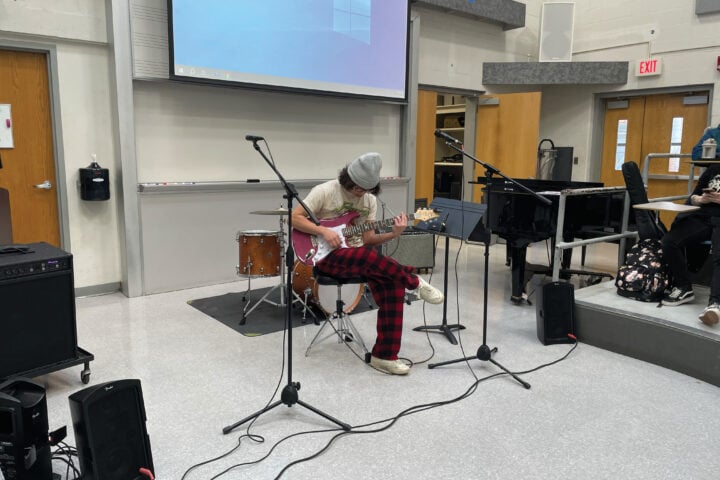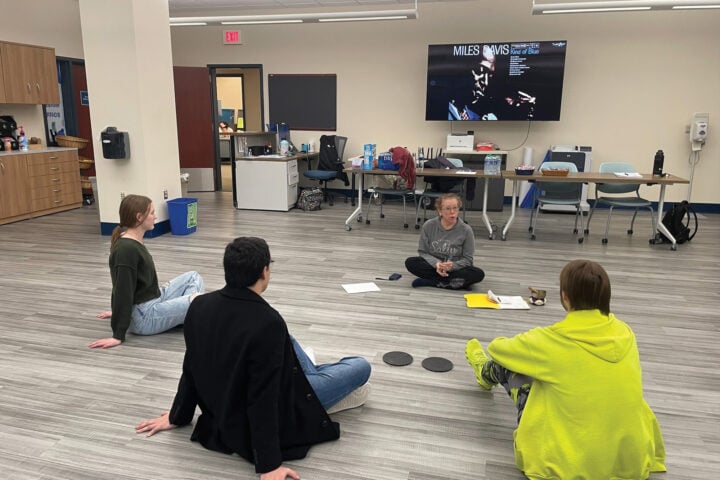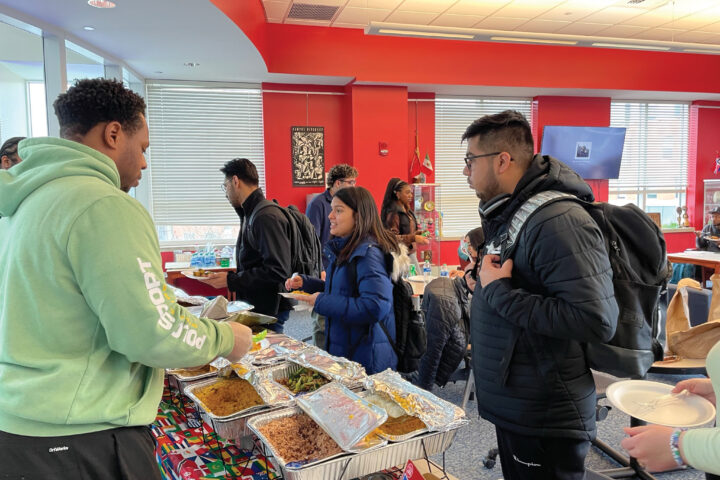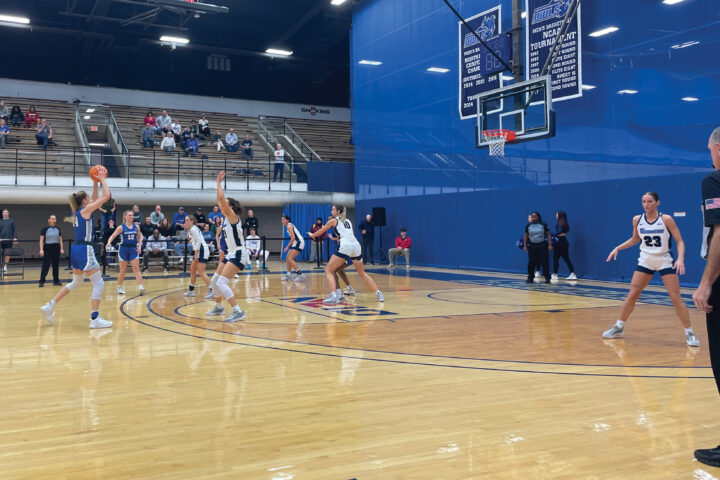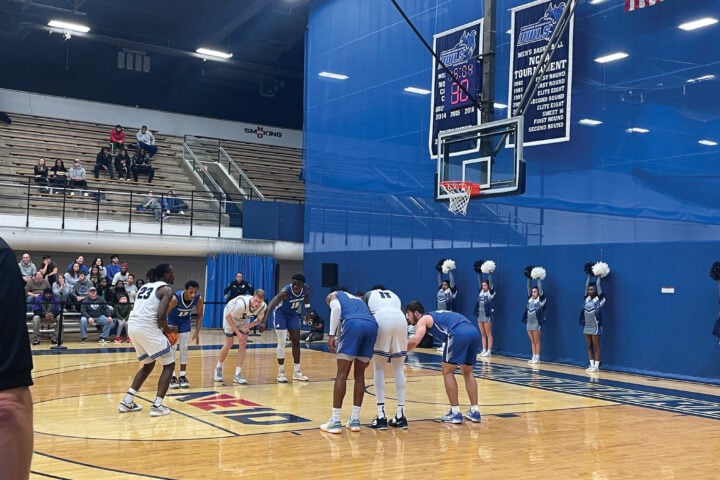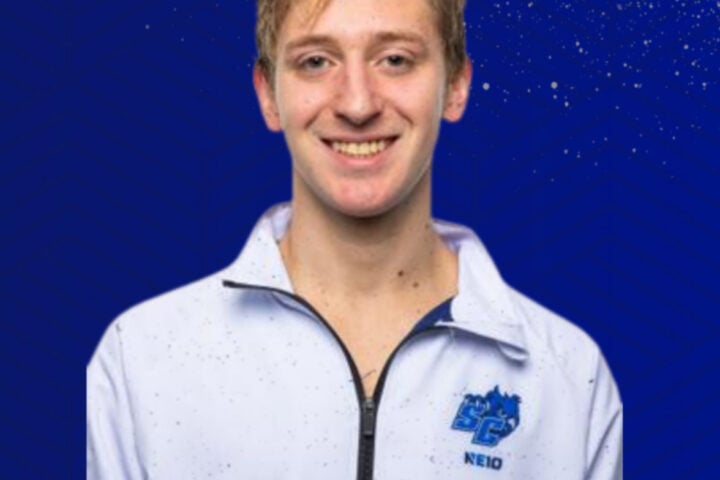August Pelliccio – News Writer
Harry Weitzel said among his earliest memories is the sounds of
shattered glass, as the Nazi’s broke through his home’s front window. Rosalyn Amenta said
her father carried emaciated corpses through Dachau.
Last week, these two and many more came together to remember the Holocaust, and it’s
horror and lasting effect on the Jewish people.
Deborah Weiss, communication disorders chair and Judaic studies co-director, said in
previous years, she has invited her mother, a Holocaust survivor, to speak before her students.
This year, instead, on April 9, Weitzel was given the stage.
“He was born in Marburg, Germany in 1933,” said Weiss, “that was the year that Hitler took
over the German government.”
She said Weitzel is a long time part of Weiss’ family and community, since her parents and
Weitzel’s all came to America as refugees, and found solace in connecting with one another. He
was invited to speak of his experience from a young age, being exposed to Nazi Germany, and
moving to America.
“I came to America at the age of almost nine,” said Weitzel. “The only that I was interested in
was becoming an American.”
Weitzel talked about what he remembers as his first visual memory, at the age of three. He
said he remembered following his grandfather down the stairs of their home, and watching him
say his prayers, wearing his traditional Jewish prayer cap and shawl. His second memory, he
said, was Christmas morning, at the home of his other grandparents, Christian grandparents.
“From day one in this world, I had a dichotomy of an approach to life and people,” said
Weitzel, “and all my life that’s done me very well.”
The third memory that Weitzel can recall was being comfortably resting in bed at his Jewish
grandfather’s house at the age of 5, and hearing the sounds of shattering glass, and shouting.
Rocks came through the front window, he said, and his grandmother came to grab him, and
sheltered him under her bed.
“I was half asleep, it was just part of what’s going on,” said Weitzel. “I didn’t give it much
thought.”
Weitzel said his mother came to his grandparents’ home that evening, packed his bag, and
told him they were going to get him somewhere that he could be in a better school. Weitzel said
that was the last night he saw his grandparents, who were later killed in the Treblinka
extermination camp on October 27, 1942, a date he said is deeply embedded in his mind.
Fast forward to when Weitzel was 9, he recalled finally stepping onto the boat that would
bring him to the United States.
“It was the middle of the war,” said Weitzel, “and the main concern on that boat was that we
would get torpedoed.”
Such ships, he said, would come from America to deliver ammunition to England, and
bringing back refugees. Because of this, Weitzel said there was a fear of Germany attacking
American ships.
Weitzel said when he arrived in America; he was most concerned with beginning the journey
he described at the beginning of his lecture — becoming an American.
Weiss thanked Weitzel for sharing his story, and for making himself available to come to
Southern to speak to her students in the Judaic studies department.
She invited each member in the audience to attend a future event, again remembering the
Holocaust. April 23, she said, world-renowned clinical psychologist David Senesh, who lives
and practiced in Israel, will host a lecture. He is commonly known for his aunt Hannah Senesh,
whose diaries from the time of the Holocaust were later published.
“Dr. Senesh himself was a prisoner of war, during the 1973 Yom Kippur War,” said Weiss. “He will discuss the parallels and differences between his captivity as a prisoner of war, and his aunt’s captivity during World War II.”
Later that week, April 13, Weiss again got together again with her students, this time with
David Pettigrew and Miriam Glenn. The two, and others, shared stories to celebrate the opening
of the Holocaust remembrance display previously reported by the March 28 edition of Southern
News.
Pettigrew, professor of philosophy, opened the afternoon’s reflection by citing a statistic he
found reported by the New York Times.
“Sixty-six percent of millennials,” he said, “don’t know what ‘Auschwitz’ means.”
He said that if remembrance programs are especially important today, so we don’t lose touch
with the horror that happened during World War II.
The Holocaust remembrance display is available to view in Buley Library currently.
Pettigrew invited a couple of key contributors to speak about the work they’ve donated or
loaned, the stories they and their families have.
First, Zvi Goldman spoke about an original wooden sculpture that he loaned to the exhibit. He
said the entire piece, whose medium is carved oak, took about 40 man-hours to produce.
“Typically artists are asked what were their thoughts during this specific piece of art, and
what does it mean,” said Goldman. “This was done in memory of the Holocaust and the revival
of the Holocaust.”
The six pieces rising from the base of the sculpture, he said, are there to represent the six
million Jews whose lives were taken from them. He said the “revival” portion regards what he
calls the miraculous feat that the Jewish people recovered, and remained culturally rich.
Next, that afternoon, Rosalyn Amenta, professor of women’s studies spoke. Amenta loaned to
the exhibit, a photo album with a collection of pictures from the Dachau concentration camp. She
said the album came from her father, a unit of the 45 th army infantry that was assigned to liberate
torture centers. Amenta said she was happy to share the album with Southern, and that it has had
a lasting effect on her family.
“My father raised us teaching us the horror of the unspeakable inhumanity that he had to
experience there, with his other fellow soldiers,” said Amenta. “My father had to carry out
emaciated survivors; my father had to carry out corpses.”
The photo album was a documentation of the concentration camp, and Amenta said her father
wanted to make sure his family and others knew what happened there. She said the photo album
served as a textbook to her, growing up.
“This is what a human being can do to another human being,” said Amenta, “if we don’t
speak up and fight and stop it.”
After these community members shared their stories, Pettigrew spoke briefly about how the
exhibition was put together. He said it couldn’t have been done without two students of his, and
a former student. Respectively, they are Melissa Lewis, Alexis Simons and Glenn. Each of the
three read excerpts of poetry from Holocaust survivors and family members, and invited the
audience to view the display cases up close.
“Part of the program today, in a sense, is reaching out, fostering and celebrating our
community,” said Pettigrew, “at Southern, and beyond.”
Photo Credit: August Pelliccio
























